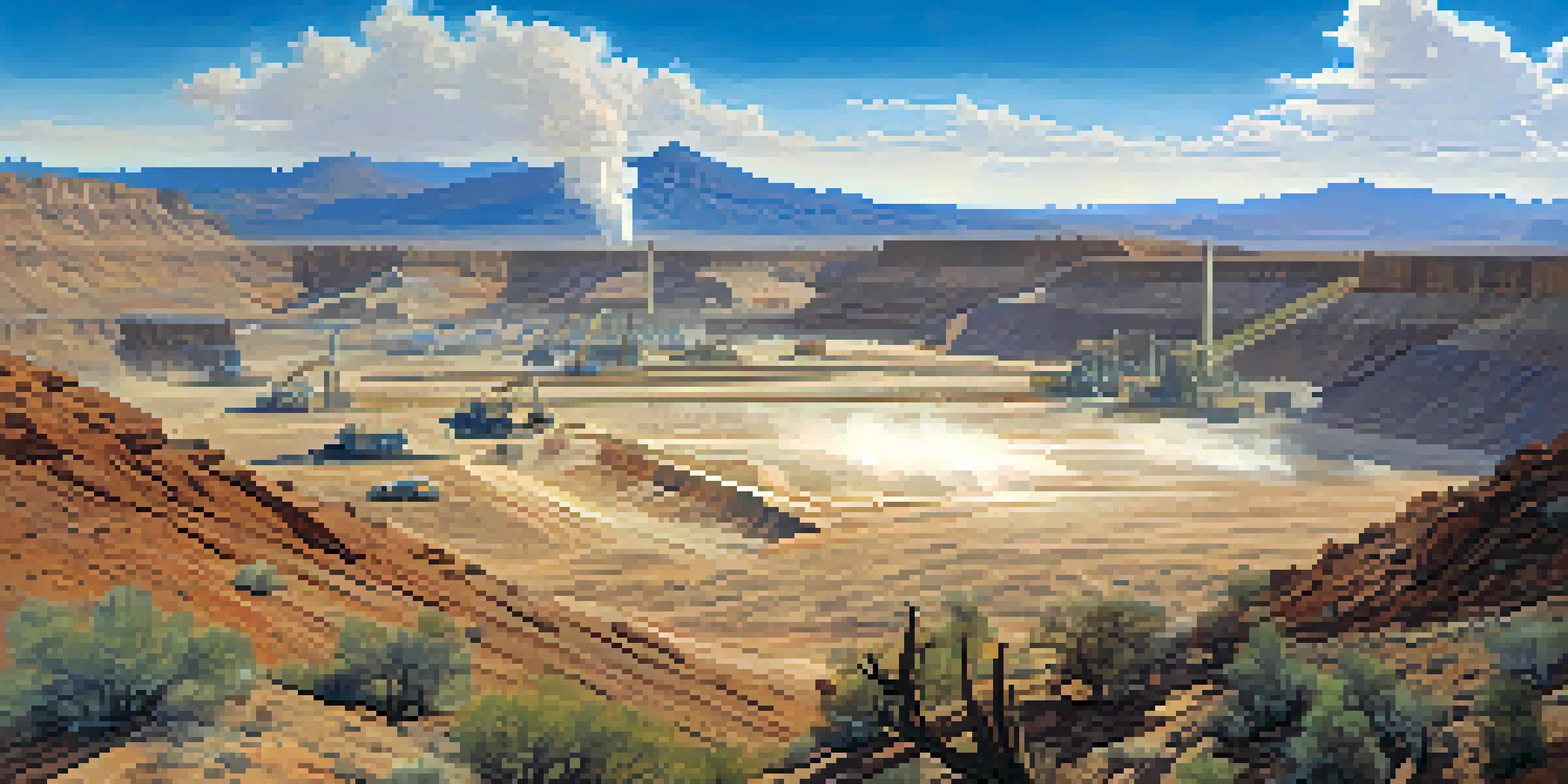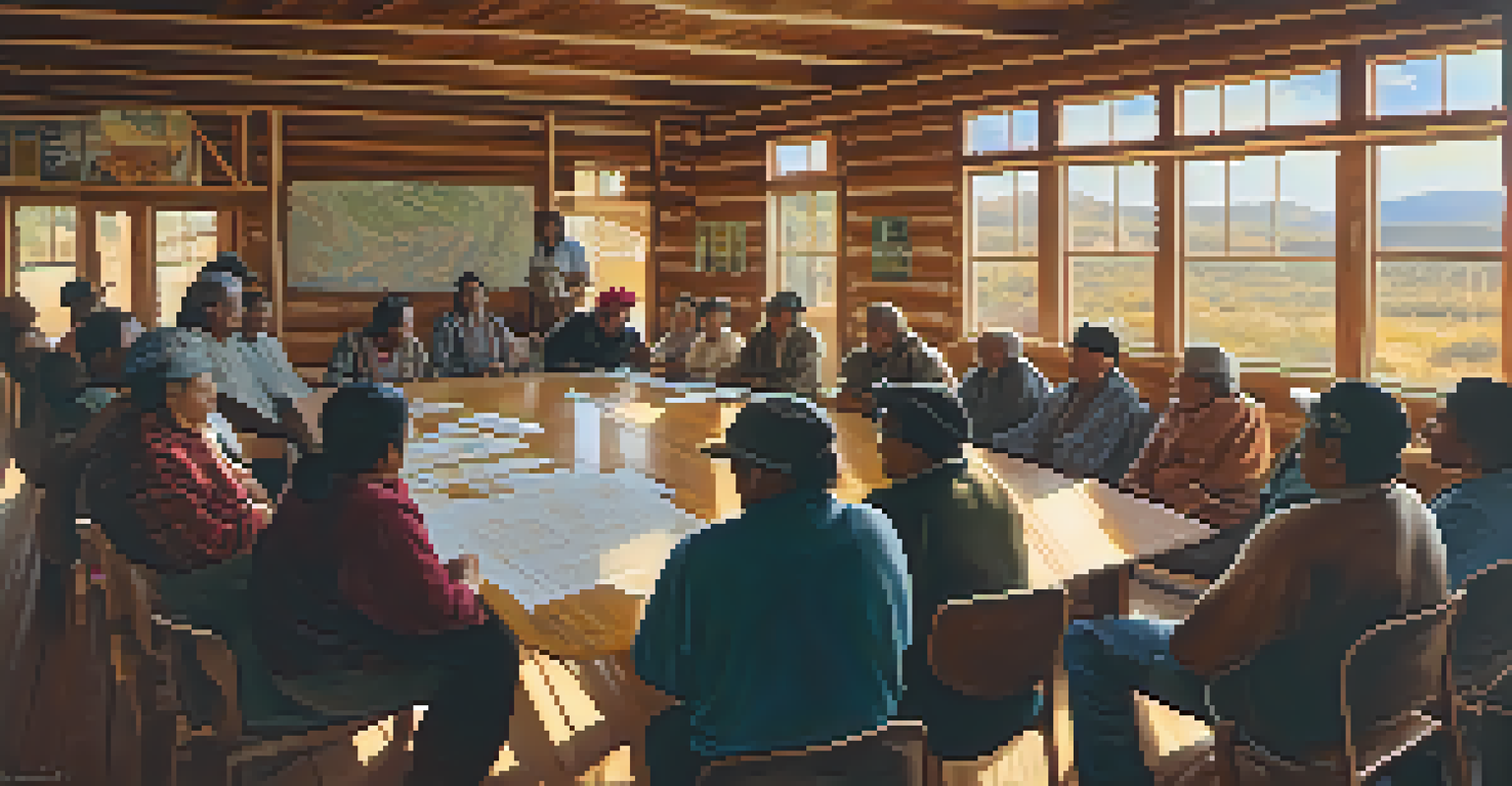Environmental Consequences of Arizona's Mining Operations

Overview of Mining in Arizona and Its Importance
Arizona is known for its rich mineral resources, including copper, gold, and silver. Mining has been a cornerstone of the state's economy, providing jobs and contributing to local communities. However, this vital industry comes with significant environmental costs that cannot be overlooked.
Mining is a crucial part of the economy but must be balanced with environmental stewardship to protect our natural resources.
As we delve into the environmental consequences, it's essential to understand the scale of mining operations in Arizona. The sheer volume of land disturbed and resources extracted can leave lasting impacts on ecosystems and biodiversity. Balancing economic benefits with ecological health is a complex challenge.
In the following sections, we will explore various environmental consequences stemming from mining activities, shedding light on the delicate relationship between industry and nature in Arizona.
Land Degradation and Habitat Loss
One of the most immediate effects of mining operations is land degradation. Large areas of land are cleared and stripped of vegetation, leading to habitat loss for many species. This disruption can have cascading effects on local wildlife, altering food chains and reducing biodiversity.

For instance, the removal of topsoil not only affects plant life but also contributes to erosion, which can further degrade the landscape. The loss of habitats can push some species toward extinction, especially those that are already vulnerable.
Mining's Environmental Impact
Mining in Arizona significantly affects the environment through land degradation, water pollution, and air quality issues.
Additionally, the restoration of mined lands is often a challenging and lengthy process. Even with efforts to rehabilitate, the land may never fully return to its original state, leaving behind a permanent mark on Arizona's natural beauty.
Water Pollution and Its Ripple Effects
Mining operations often lead to water pollution, primarily through the leaching of heavy metals and toxins into nearby water sources. These contaminants can severely impact aquatic ecosystems, harming fish and other wildlife and disrupting the natural balance of these habitats.
Sustainable mining practices are essential for the health of both the planet and the communities that depend on its resources.
Moreover, polluted water can affect local communities that rely on these sources for drinking, irrigation, and recreation. The implications for public health and agriculture can be significant, raising concerns about the safety of water supplies.
Efforts to mitigate water pollution, such as treatment facilities and regulations, are in place, but their effectiveness can vary. The challenge lies in ensuring that mining companies are held accountable for their environmental footprint.
Air Quality and Dust Emissions
Dust generated from mining activities poses a serious threat to air quality in Arizona. Operations like drilling, blasting, and transporting materials release particulate matter that can lead to respiratory issues for nearby residents and wildlife. It’s a silent but dangerous consequence of mining.
In arid regions, such as Arizona, dust storms can exacerbate these issues, spreading pollutants over larger areas and affecting air quality even further. This leads to health risks for vulnerable populations, particularly children and the elderly.
Community and Cultural Disruption
Local communities, especially Indigenous groups, face cultural erosion and resource strain due to mining operations.
Efforts to control dust emissions, such as water sprays and dust suppression technologies, are crucial. However, the ongoing challenge remains to balance operational efficiency with the health of local communities and the environment.
Impact on Local Communities and Indigenous Lands
Mining operations can significantly affect local communities, particularly Indigenous groups with deep cultural ties to the land. The disruption of traditional practices and loss of sacred sites can lead to cultural erosion and a sense of displacement.
Furthermore, the influx of workers can strain local resources and infrastructure. While mining can create job opportunities, it can also lead to social challenges, including increased demand for housing and services, which might not be sustainable in the long term.
Community engagement and consent are vital in addressing these issues. Striking a balance between economic development and respect for Indigenous rights and local needs is crucial for fostering a harmonious relationship.
Climate Change and Carbon Footprint
The mining industry contributes to climate change through greenhouse gas emissions generated by machinery, transportation, and processing. As the world grapples with the effects of climate change, the mining sector's carbon footprint cannot be ignored.
In Arizona, where water scarcity is already a pressing issue, the impact of climate change can exacerbate existing challenges. Changes in temperature and precipitation patterns can affect the availability of resources critical to both mining and local communities.
Need for Sustainable Practices
The future of Arizona's mining industry must focus on sustainability to balance economic growth with environmental responsibility.
Efforts are underway to adopt more sustainable practices, such as using renewable energy sources and improving efficiency. However, the transition to greener mining operations will require significant investment and commitment from the industry.
Regulatory Framework and Enforcement Challenges
Regulations governing mining operations in Arizona aim to mitigate environmental impacts, but enforcement can be inconsistent. Agencies often face challenges in monitoring compliance, leading to gaps in accountability.
Public awareness and advocacy play a crucial role in pushing for stronger regulations and enforcement. Communities affected by mining operations are increasingly vocal about their concerns, demanding transparency and responsible practices.

Strengthening the regulatory framework and fostering collaboration between stakeholders can create a more sustainable mining industry. This collaborative approach can pave the way for innovative solutions that benefit both the economy and the environment.
Future Directions for Sustainable Mining Practices
The future of mining in Arizona must prioritize sustainability to minimize environmental consequences. This includes adopting advanced technologies that reduce waste and emissions, as well as implementing best practices for resource management.
Collaboration between mining companies, government agencies, and local communities is essential for developing innovative solutions. By working together, stakeholders can find ways to balance economic growth with environmental stewardship.
Education and awareness are also key components in fostering a culture of sustainability within the industry. As consumers become more environmentally conscious, the demand for responsible mining practices will likely shape the future of Arizona's mining landscape.